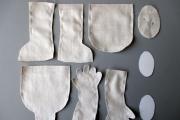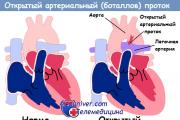The onset of mature lactation in a nursing mother. Lactation
Breastfeeding is a special period in the life of a young mother. Breastfeeding helps you recover faster after childbirth, provide protection from mastopathy and establish a close relationship with your baby. Often nursing mothers face a lack of milk. Today we will tell you how to increase lactation at home, and what to do if there is practically no milk in the breast.
5 main factors influencing the increase and maintenance of lactation
Proper development of a child is impossible without proper nutrition. Mother's milk is ideally suited to the baby's body's ability to absorb food. From breast milk, the baby receives everything it needs: enzymes, growth factors, immunoglobulins that protect the child’s body from infections.
Important! Every child should receive breast milk for at least 6 months, because it is completely tailored to the individual needs of the baby.
Among the many factors influencing the occurrence, increase and maintenance of milk secretion, the most important are:
- Health status of nursing mother and baby.
- A mother's desire and will to breastfeed her baby.
- The mental state of a nursing mother and the family situation.
- Regular latching of the newborn to the breast;
- Conscientious preparation and learning of proper breastfeeding techniques.
What to do if there is not enough milk? We will definitely tell you about many effective ways to improve lactation, but first we recommend watching this video:
Before concluding that the mother has little milk, it is necessary to exclude the above factors. If there are errors in the correct latching of the breast, physical fatigue of the nursing mother or excessive mental stress (anxiety, anxiety), then the lack of milk is only a consequence of existing problems. Their solution will help to avoid decreased lactation and premature weaning.
Menu for a nursing mother: list of products to increase milk supply
The quality of milk and its quantity directly depend on the diet and diet followed by the nursing mother. A varied diet stimulates improved lactation and helps establish proper breastfeeding.
Products that should be included in a mother's daily diet:
- boiled milk and fermented milk products (kefir, yogurt) - at least 0.5 l/day;
- cottage cheese or curd products – 50-100 g/day;
- boiled meat – at least 200 g/day;
- fresh vegetables (carrots, onions, sweet peppers, radishes) – 600 g/day;
- butter – 30 g/day;
- boiled chicken eggs – 1-2 pcs.;
- fruits (green apple, pear) – at least 300 g/day;
- black bread with cumin – 400 g/day.
Also during the lactation period, it is recommended to consume vegetable oil daily as a dressing for fresh vegetables or dishes with cereals (about 20 g/day). Sunflower oil is a natural source of vitamin E and polyunsaturated fatty acids. We talked about it in one of the previous issues.
Products that cause increased lactation:
- warm green tea (weakly brewed);
- hot chicken broth;
- liquid porridge with milk from rice and barley;
- bee honey (as a substitute for sugar);
- watermelons;
- walnuts;
- first courses with sea and river fish.

A nursing mother needs to monitor the amount of fluid consumed per day. It must be at least 2.5 liters (including all liquid dishes). 10-15 minutes before the start of the next feeding, it is useful to drink a glass of warm milk with a teaspoon of honey - this simple drink helps enhance lactation and stimulates the flow of milk in the breast.
What foods to avoid during lactation:
- natural coffee;
- semi-finished meat products;
- fast food, chips and crackers with flavoring additives;
- store-bought sauces (mayonnaise, ketchup, cheese sauces, etc.);
- canned products of industrial origin;
- products with a high cocoa content (including chocolate);
- any alcoholic drinks (strictly prohibited!).
Pay attention! In recent years, there has been a trend of babies being born with a deficient immune system. Try to avoid eating foods that can cause allergies in your baby.
Increasing lactation with folk remedies
Homemade methods to increase milk production were used by our grandmothers. Complaints about a lack of breast milk have been encountered at all times, and nursing mothers have tried all available methods to solve the problem of breastfeeding. Many of them are still relevant today.
More liquid!
Drinking fluids helps increase milk production - this is a well-known fact. Try to drink whenever possible as often as possible. Lactation improves by consuming warm herbal infusions, milk, and special herbal drinks for mothers.

Many of the herbs can be found in the pharmacy at cheap prices: dill seeds, anise, caraway seeds and fennel. A vitamin drink will help cope with the lactation crisis.
Recipe 1. Take a teaspoon of cumin seeds and add a glass of water. Bring to a boil over heat, simmer covered for 10 minutes. Turn off the heat, let it brew for half an hour, strain the resulting broth. To improve the taste, you can add 0.5 tsp. honey
Recipe 2. Pour anise seeds into a thermos and add 200 ml of boiled hot water. Close the lid and let it brew for 2-3 hours. Then strain the infusion and cool. Take 50 ml of the drink before each feeding.
Self-massage of the mammary glands
Kneading the breasts after feeding develops the inflows well, stimulating milk production and frequent flows. The massage should be done on the breast that the baby was fed on. Hand movements during the massage should be circular, from the nipple to the periphery, with light finger pressure over the entire surface, for 5-7 minutes.
Breastfeeding on demand
Feeding your baby on demand is the key to proper breastfeeding and producing the right amount of milk for each feeding. Do not take night breaks; let the baby latch on to the breast as many times as his body requires. Frequent application is the best way to stimulate lactation without any additional methods. Try to get by during the first months without calculating feeding by the hour - the baby knows better when it’s time for him to eat, and your breasts will “adjust” to his requirements.
What to do to prevent your child from starving and how to improve lactation? Advice for a young mother:
Medicines to improve lactation
Currently, the question of how to increase lactation can be solved with one trip to the pharmacy. Many medications have been tested by mothers and help solve an acute problem with breastfeeding - decreased lactation and lack of milk. If folk remedies do not help, and the lactation crisis has dragged on, then it’s time to contact a breastfeeding specialist and choose a suitable drug to increase your milk supply.
| Release form | Titles | Operating principle |
|---|---|---|
| Herbal teas for nursing mothers | Lactavit, Hipp, Humana, Grandmother's Basket, Lactaphytol | Lactogenic agents with a strengthening and tonic effect. Teas based on natural herbs (fennel, cumin, anise, etc.) have a pleasant taste and are used as daily drinks in the diet. |
| Tablets and granules | Lactogon, Apilak, Mlekoin | Effective drugs to increase lactation. Taken with food as an active supplement when breastfeeding ends. Contains natural ingredients: nettle, ginger, royal jelly. |
| Milk formulas to improve lactation | Lactamil, Milky Way, Femilak, Bellakt Mama+, MD mil Mama | Nutritious milk formulas replenish the needs of a nursing mother for vitamins, minerals and stimulate the glands to produce breast milk. Just dilute the mixture with water and drink it several times a day as a cocktail. Formula milk, when consumed regularly, helps produce milk and increase its quantity. |
Means for stimulating lactation can provide real help in reducing milk in the breast. But you shouldn’t expect a quick effect: in one case it will take a couple of days to normalize feeding, in another it will take a week.
Note! A lactation consultant will help you choose the most suitable drug - by studying your specific feeding history and observing the process, it will be easier for the specialist to suggest the optimal solution to your problem and, if necessary, choose a drug together with you.
5 Best Ways to Stimulate Milk Production
Before turning to medication, it is better to try simple methods that you can use at your own discretion and without the recommendation of a doctor.
- Frequent breastfeeding
Nature itself made sure that the baby gets enough of its mother’s milk. At the time of each breastfeeding, two important hormones are released and activated in a woman’s body: oxytocin and prolactin. They are responsible for the amount of milk produced during lactation. The more often the baby sucks at the mother's breast, the more milk will arrive at each feeding moment. - Feeding your baby at night
A night break is detrimental to breastfeeding - if the baby does not breastfeed for a long time, there is less milk. The body of a nursing mother believes that the baby will receive enough milk, which means that its amount can be reduced. This is how the decline in milk production occurs. Try to feed your baby at least twice at night to maintain lactation at the proper level. - Ensuring tactile contact with the baby
“Skin to skin” is the basic recipe for increasing milk supply without any additional recipes. Lactogenic hormones wake up at the moment of communication between mother and baby, when the child is rocked or carried in her arms. Caress your baby more often, and the problem with lack of milk will be solved by itself. - Rest, rest and only rest
During the period of lactation, free yourself from at least some household chores and chores. Sufficient sleep - at least 7-8 hours a day, good nutrition and peace of mind - these are the main conditions for the full production of a sufficient amount of breast milk. - Easy and healthy “chest” gymnastics
Daily breast exercises stimulate the functioning of the ducts, blood circulation and the production of breast milk. You need to exercise standing or sitting on a fitball in a comfortable position. Place both hands together, palm to palm. Place them behind your head. Tilt your head back, then vigorously press the back of your head onto your folded hands several times. Repeat the exercise 2-3 more times.
P.S. Previously, we talked about the nutrition of a nursing mother and about products. Let's reinforce this topic once again, since proper nutrition is the key to good lactation:
Lactation is the formation of milk in the breasts of a nursing mother. its accumulation and excretion. Milk production begins already during pregnancy. This is evidenced by the release of colostrum, which begins in the second trimester of pregnancy. Each woman's lactation period is individual; for some mothers it can last several years, while for others it ends a month after giving birth.
What promotes breast milk production?
Prolactin and oxytocin are the main hormones that are responsible for the production of breast milk. While prolactin performs its functions to create milk, oxytocin plays a role as an assistant for its release.
In order for there to be enough milk and it is nutritious for the baby, a young mother must lead a healthy lifestyle, eat a balanced diet and not overwork.
Remember the following rule: The more often the baby nurses, the more milk will be produced.
Stages of lactation
- Certain substances found in the blood begin to accumulate in the mammary gland.
- Subsequently, they take part in the synthesis of the components of breast milk, which occurs in the secretory cells of the mammary gland.
- The synthesized products are formed and accumulate in the cytoplasm of secretory cells.
- And at the final stage, breast milk enters the alveoli of the mammary gland.
All stages of lactation begin during pregnancy, with the exception of the final stage. Breast milk is released after childbirth. The same hormones released during pregnancy have an influence on lactation processes.
Lactation process

The lactation process occurs differently for all women. Typically, a small amount of colostrum is released after birth. But the further production of breast milk depends on the amount of hormones, the emotional state of the mother in labor, her nutrition, the course of labor and other factors affecting lactation.
In some cases, a sharp flow of milk occurs already on the second day after the birth of the baby. But it is possible that the increase will occur gradually.
Milk may appear much later, only by 5-7 days. Delayed lactation often occurs in primiparous women. What makes them think about ways to increase lactation. But, as you know, the main responsibility for this process lies with hormones.
It is very important to feed your newborn properly. This helps produce breast milk in the required quantity. If you stop feeding your baby, or put him to the breast very rarely, milk production will decline. But you shouldn’t overfeed your baby either. The remaining milk can be expressed.
In the first month of a baby’s life, not only the quantity changes significantly, but also... The first two weeks of lactation, breast milk is considered preparatory, and only from 10-13 days can it be called mature.
Mother's milk is the most important product for a child, containing all the nutrients, microelements and vitamins it needs. Even the highest quality infant formulas are inferior to breast milk. Lactation is a natural process necessary for the harmonious development of the baby.
Products that affect lactation
There are several methods to normalize the process of breast milk production: naturally and through special medications. It is recommended to use medications only when it is not possible to achieve certain results in the usual ways (proper nutrition, a healthy lifestyle), and only on the recommendation of a specialist.
It is important that a nursing mother drinks a lot of liquid, at least 2 liters per day. It is necessary to balance the diet and exclude harmful foods. The nurse's diet should include:
- lean meats: chicken, veal, rabbit;
- fish: hake, pike perch, carp, pollock, carp;
- protein products: milk, eggs;
- nuts;
- fermented milk products: yogurt, kefir, fermented baked milk, cottage cheese, yogurt;
It is necessary to exclude from the diet:
Note to moms!
Hello girls) I didn’t think that the problem of stretch marks would affect me too, and I’ll also write about it))) But there’s nowhere to go, so I’m writing here: How did I get rid of stretch marks after childbirth? I will be very glad if my method helps you too...
- fat;
- roast;
- spices;
- preservatives, dyes and additives;
- carbonated drinks;
- vegetables, fruits and berries that cause allergic reactions: tomatoes, citrus fruits, strawberries, black currants, raspberries.
Proper breastfeeding of a child
From birth you need to learn how to breastfeed your baby correctly ( ). If there is a lack of milk, the baby should be fed more often than usual.
The correct feeding process looks like this: while sucking the breast, the baby should turn the lower lip outward, and press the upper nipple firmly against the lower one. The baby should completely cover the entire nipple. This massage of the nipple by the baby during feeding stimulates lactation. If applied incorrectly, it may appear that it will cause discomfort to mommy. It will take time for such cracks to heal, during which time you will have to temporarily stop breastfeeding, which can lead to loss of milk.
Healthy sleep, rest and fresh air will help the nurse receive positive emotions, and this will have an impact on lactation.
A nursing mother should devote more time to her baby: hug him, kiss him and talk to him. All these actions not only have a good effect on lactation, but also enable the baby to feel calm and protected.
Ways to increase lactation
Sooner or later the time comes when you need to stop breastfeeding your baby, and you need to somehow stop milk lactation. And this is where certain difficulties arise. Weaning a baby from the breast is not difficult (see how to do it simply). But how to make the milk go away? Unpleasant “chewing” sensations in swollen breasts, underwear wet from milk - which woman is not familiar with these sensations? Folk methods for stopping lactation and a list of drugs for quickly stopping lactation -
What drugs increase lactation?
Today there are many means to help increase lactation. The most popular are teas, they contain vitamins, herbs and minerals. For example, grandma's basket, lactogon, lactavit ( ).
Many mothers prepare different formulas on their own, which should increase the amount of breast milk. This is not recommended. Only after consulting your doctor and certain examinations can you prepare and take various herbal decoctions.
Herbs such as lemon balm, nettle, dill, fennel, popular among nursing mothers, are included in lactation teas. They can also be used separately. It is recommended to take all herbal infusions and decoctions warm, because warm drinking increases milk production.
And finally, get rid of the terrible complexes of fat people. I hope you find the information useful!
Cases when breastfeeding is forced to be interrupted before term, alas, are not so rare. The reasons for this are varied. Sometimes mom gets sick and goes to the hospital. And sometimes a baby, born weak, cannot attach to the breast correctly - and the milk gradually fades away. It is also possible that the milk does not completely disappear, but the amount is still not enough for the baby. There are many options. But the main thing is that in such a situation it is not the only way out. Every woman can start over and restore lactation.
Our body is truly amazing, and restoration (or increase) is not a miracle, but a completely natural process. Moreover, lactation can improve even for adoptive mothers! Not long ago, a study was conducted in which more than 300 women who attempted relactation were interviewed. It turned out that more than half of the mothers switched to full feeding within a month, another quarter achieved this goal over a longer period of time, and another quarter of mothers ended up using mixed feeding.
So, for successful relactation there are several conditions. The first is physical contact between mother and baby. Many people think that such a remedy is simply some kind of psychological factor. But that's not true. In fact, skin-to-skin contact increases the level of the “love hormone” oxytocin and the “motherhood hormone” prolactin, which are responsible for lactation. In addition, a baby who rests more often on his mother’s chest is more inclined to latch onto the breast - of course, so far only for comfort, but this is already an important step.

But it must be said that this scenario is almost ideal. What to do if the baby does not take the breast yet? In these cases, the mother needs to stimulate lactation herself. Perhaps the baby will agree to attach to the breast if the milk that appears is enough for easy feeding. The hormones oxytocin and prolactin are released in response to mechanical stimulation of the areola and nipple, and this can be not only natural feeding, but also pumping. Even if there is no milk in the breast at all, with regular pumping it appears.

The same massage pads are also available in Philips AVENT manual breast pumps. And if you are looking for a simple and affordable solution, then manual models that do not require electricity or batteries are your choice. Contrary to general belief, these models are no less effective than electronic ones. This was proven by clinical trials conducted in England, according to which Philips AVENT manual breast pumps completely empty the breast, expressing the same amount of milk and in the same time as electric breast pumps used in maternity hospitals.

After such stimulation, your milk production will definitely begin to appear (increase). And here we need to teach the baby to take the breast. To do this, you should not torment a resisting baby - it is better to first gain his trust and accustom him to being at the breast. Make the most of the magic trick of skin-to-skin contact by pressing your baby's cheek to your chest. You can interest your baby by dripping expressed milk from a pipette directly onto the areola. Also offer the breast when the baby is in a good mood or when he is sleepy.
Most children develop a new one in about 2-3 weeks. But if the process is delayed, do not rush to give up efforts. After all, stable lactation is established about 2 months from the start of a new life. In addition, be prepared for the fact that the more time passes from childbirth, the longer the recovery takes.
Based on experience, let’s say that mothers who started relactation were mostly satisfied. And they were glad not only that their babies were feeding again, but also that special closeness that arises during feeding. So, there is nothing impossible in restoring lactation, and you can safely start without fear of failure - it’s worth it.
Lactation in women is a natural, natural process of producing milk in the mother’s mammary glands to feed a newborn child. Breast milk provides the baby with all the organic substances necessary for growth and proper development. How does such a valuable product appear in the female breast? And what factors can affect the formation and maintenance of lactation?
Lactation concept
Doctors consider lactation (in Latin “lactatio” - sucking, “lactis” - milk) as a complex and long-term physiological process that occurs in several stages:
- the first stage - mammogenesis - growth, maturation and development of a woman’s mammary glands;
- the second stage - lactogenesis - is the release of colostrum first in late pregnancy, then milk after delivery;
- and the third stage - lactopoiesis - maintaining normal milk production throughout the entire period of breastfeeding.
But most often, the term lactation is used to directly define the process of breastfeeding a child - in the postpartum period, the formation and accumulation of milk, as well as its release from the mother’s mammary glands through the excretory ducts through the nipples. It is in this context that we will consider the physiology of lactation.
Lactation is a complex physiological process that includes the development of the mammary glands, the secretion and release of milk after the birth of the child and before the attenuation of his sucking reflex.
Physiology of the process
When pregnancy occurs, hormonal changes occur in the female body. Under the influence of hormones produced by the placenta, the mammary glands throughout the entire period of gestation are prepared to provide the newborn with adequate nutrition immediately after birth.
Lactation is a hormone-dependent process; it is regulated by the endocrine and central nervous systems.
The secretion of placental lactogen occurs in the placenta; this hormone is responsible for the development of the mammary glands during pregnancy
The role of hormones
The main role in the formation and regulation of lactation is played by hormones - prolactin, placental lactogen, oxytocin:
- Prolactin is synthesized in the pituitary gland (the greatest release occurs from 3 a.m. to 8 a.m.). It is he who starts the process of milk secretion in the alveoli of the mammary glands. Prolactin is considered a maternal hormone, as it is responsible for normal lactation throughout the entire time the baby receives breast milk. With frequent attachments and active breastfeeding by the baby, the secretion of prolactin increases, and therefore milk production too. As they say, demand creates supply.
- Human placental lactogen is produced by the placenta. It is involved in preparing the pregnant woman’s mammary glands for the upcoming lactation (shortly after birth, the placenta is expelled, and placental lactogen disappears from the blood of both mother and baby).
- Oxytocin, the happy hormone, relaxes the milk ducts and promotes the release of breast milk. Its production is influenced by the emotional state of a woman. Fatigue and stress reduce the secretion of oxytocin. But a calm environment and the presence of a peacefully snoring baby nearby lead to an increase in the level of oxytocin in the mother’s blood and, accordingly, an improvement in lactation. It is very important to empty your breasts regularly. Stagnation of milk - lactostasis - can lead to inflammatory processes in the breast and suppression of lactation.
In addition to the hormones directly responsible for the production and secretion of milk, other hormones also influence lactation during its formation: estrogen and progesterone, for example.
The hormones prolactin and oxytocin are produced in the pituitary gland; the mechanism for producing oxytocin is triggered when the baby is latched to the breast.
Mechanism of breast milk production
Glandular tissue, consisting of the so-called alveoli - acini, which form lobules (lobes), uniting with each other. This is what the mammary glands are. They are all penetrated by excretory ducts. Milk collects in the ducts and is released to the nipple area through contractions of the muscle tissue around them. There, the ducts unite to form a bundle and open, allowing milk to flow freely. Each mammary gland weighs on average 150–200 g (weight may vary depending on the anatomical characteristics of each woman).
When pregnancy occurs, the blood supply to the mammary glands increases under the influence of hormones (estrogen, progesterone, placental lactogen), and their intensive development begins. By the end of pregnancy, the weight of each breast can grow to 600–900 g. The process of development of the mammary glands ends only 2–3 days before delivery.
Milk is produced and accumulated in the alveoli and flows through the excretory ducts to the nipples, where the ducts form a bundle, so milk flows from the breast in several streams, not just one
Already from the middle of the second trimester, milk can be produced in the breasts of the expectant mother and even in small quantities can be released from the nipples in the form of a cloudy liquid, but the high content of progesterone prevents its full secretion and outflow.
After childbirth, the content of progesterone in a woman’s body decreases significantly (hormones that restrain lactation were produced by the placenta - its expulsion causes another hormonal change in the woman’s body), which means that nothing prevents the secretory cells of the mammary glands, lactocytes from components of the mother’s blood, from starting to produce milk.
This first milk is considered immature - it is called colostrum. The mechanism of its production starts when a newborn baby is first applied to the mother’s breast. This occurs against the background of increased concentrations of estrogen in a woman’s blood.
Stimulation of the nipples by the child provokes the secretion of prolactin in the woman’s pituitary gland, which is responsible for milk production. And physical contact with the baby causes her to release the love hormone oxytocin into the blood, which activates the contraction of muscle cells around the excretory ducts and, in fact, the movement of milk from the acini to the nipples.
The nature of lactation is this: by putting the baby to the breast, you stimulate the secretion and release of milk. Lactation stops when either you stop breastfeeding or the child’s sucking reflex disappears (this usually happens by 2.5–4 years).
Normally, the duration of lactation in women can range from 5 to 24 months. At the same time, 600–1300 ml of milk is produced per day, depending on the baby’s needs. If a woman stops feeding her baby, lactation is suppressed naturally within 1–2 weeks.
Video: how milk is produced
Stages of lactation
The beginning of breastfeeding (lactation) is considered to be the moment when a mother first puts her newborn baby to her breast. The first 2–3 days (sometimes more, 5–7) after birth, colostrum is released from the mother’s mammary glands. After a cesarean section (or other complications during childbirth), a woman’s milk may begin to arrive somewhat later (more often if the operation for medical reasons was performed earlier than the expected date of delivery).
Becoming
Very little early, immature milk (colostrum) is produced, but it is quite capable of satisfying the energy needs of a newborn baby. As for the vitamins and microelements that a child needs for full development, there are very few of them in colostrum. Therefore, very soon, literally within the first week, the consistency and composition of mother's milk changes.
Colostrum plays a very important role in the development of the baby's immune and digestive systems. It enters the child’s body with:
- maternal antibodies that protect the baby from the harmful effects of pathogenic microflora in a new environment for him, while his own immunity is formed and strengthened;
- beneficial lacto-, bifido- and other bacteria that populate the gastrointestinal tract of a newborn and maintain normal microflora in it.
Colostrum contains little fluid and does not overload the baby's kidneys. It also has a laxative effect and helps remove meconium from the baby’s intestines.
Approximately 35–40 hours after delivery, early transitional milk arrives to replace colostrum, and late transitional milk arrives within 3–7 days. Its composition is changing, now it contains all the vitamins and minerals necessary for the active growth and development of the baby.
This stage of lactation is characterized by the so-called milk flow. The woman feels her chest filling up and getting heavier. Some mothers feel a tingling sensation in their chest. Some people may experience hardening of the mammary glands. Therefore, it is very important at this stage of lactation to put the baby to the breast often and make sure that he empties the mammary gland completely. This way you stimulate the supply of milk in the amount that the baby needs and help establish lactation.
Breast milk at all stages of lactation differs in composition, its quantity corresponds to the needs of the baby
Oxytocin reflex
The mother's milk release reflex while the baby suckles at the breast is called the “oxytocin reflex,” since it is this hormone that initiates the contraction of the breast muscle tissue and the movement of milk through the excretory ducts.
The oxytocin reflex in nursing mothers can manifest itself:
- burning or tingling of the mammary glands before feedings or while the baby is sucking the breast;
- a feeling of heaviness, fullness in the chest, even pain;
- leakage of milk before feedings or while the baby is suckling on the opposite breast;
- secretion of milk even when the baby has already stopped suckling.
The secretion of the hormone oxytocin by the pituitary gland is greatly influenced by the emotional state of the mother. When she is calm and her baby is in close proximity, the hormone is produced in sufficient quantities, and accordingly, a lot of milk is released.
The production of oxytocin is hampered by psycho-emotional stress, fatigue, and a long stay away from the child - then the movement of milk through the excretory ducts becomes difficult.
Is it possible to induce lactation artificially?
There are a number of pathological conditions when milk does not arrive after the birth of a child. These conditions include:
- premature or difficult birth, caesarean section;
- diseases of the endocrine system;
- mental and nervous disorders;
- inflammatory processes in the body;
- oncological diseases, etc.
In such cases, to stimulate lactation, a woman is prescribed hormonal therapy and special lactogonic drugs: Apilak, Laktogon, Pulsatilla compositum, Mlekoin (homeopathy), etc., but they can only be used as prescribed by a doctor.
With the help of these means, as well as regular latching of the baby to the breast, lactation can be induced in nulliparous women. Only they will not produce colostrum. This option is good for adoptive mothers who want to go through all stages of motherhood.
Milk formation
Lactopoiesis - mature lactation. The duration of the transition to mature milk is individual for each nursing mother. In primiparous women, the formation of lactation can last 1.5–3 months. In multiparous women, mature milk begins to be produced earlier - after 3 weeks - 1.5 months.
Since milk production in the mammary glands depends on the content of certain hormones in the blood, after the birth of the child and expulsion of the placenta, it will be produced regardless of how often the mother puts the baby to the breast. Frequent feedings are important to prepare for the stage of lactogenesis, called milk formation, when mature milk replaces the late transition stage, and its composition again changes depending on the needs of the baby.
When breastfeeding is established, lactation is established, hot flashes are no longer observed - before feedings, the breasts are not filled with milk, it is produced while the baby is sucking. At the same time, the mother’s mammary glands always remain soft, breast soreness disappears (if she was at the stage of developing lactation).
The glands produce exactly as much milk as the baby sucks: the more often you put the baby to the breast, the longer he sucks and the more he sucks, the more milk is released. It is very important at this stage not to give up night feedings.
The main production of milk during mature lactation occurs during active sucking of the baby
Lactation crises
Mature lactation is a calm and pleasant period in the life of mother and baby. They have already adapted to each other. The mother's body has learned to meet the needs of the little person. But at certain stages of a child’s development, he needs more milk, and the previous norms no longer satisfy him. Then the baby sucks the breast greedily and becomes capricious.
Such periods are called lactation crises. The development of a child occurs in leaps and bounds. And most often, lactation crises occur when the baby turns:
- 3 weeks;
- 6 weeks;
- 3 months;
- 6 months.
Don't panic - this is a temporary phenomenon. Put your baby to your breast more often; after a few days (from 2 to 7) the mammary glands will learn to produce as much milk as the baby needs.
How can a nursing mother increase her lactation?
If it seems to you that you are not producing enough milk, first of all check whether this is actually so: check how many times a day your baby defecates, seek advice from an obstetrician-gynecologist and pediatrician.
The following will help you increase lactation:
- frequent latching of the baby to the breast (night feedings are required);
- a complete diet, drinking fluids in sufficient quantities (2–3 liters per day);
- breast massage before each feeding, warm shower;
- lactogenic teas with the addition of dill, fennel, nettle and other medicinal herbs;
- ready-made teas to stimulate lactation - Laktovit, Humana, Hipp;
- good rest, walks in the fresh air.
There are situations when a mother cannot breastfeed her baby for some time (due to illness, taking medications, stress, business trips, etc.). At the same time, it is quite possible to maintain lactation: you just need to express milk regularly. After putting the baby to the breast, the function will gradually be restored.
Photo gallery: drugs that stimulate lactation
 Hipp lactogonine tea contains anise, fennel and cumin and is prescribed to stimulate milk production during lactation.
Hipp lactogonine tea contains anise, fennel and cumin and is prescribed to stimulate milk production during lactation.  Mlekoin is a homeopathic remedy used for lack of milk in nursing mothers
Mlekoin is a homeopathic remedy used for lack of milk in nursing mothers  Lactogone increases the volume of milk produced during lactation
Lactogone increases the volume of milk produced during lactation  Among the folk remedies, teas and infusions of fennel, nettle, dill, and anise are good for increasing lactation.
Among the folk remedies, teas and infusions of fennel, nettle, dill, and anise are good for increasing lactation.  Apilak contains royal jelly
Apilak contains royal jelly  Lactogonic teas are usually produced in granules or filter bags; they are very easy to brew
Lactogonic teas are usually produced in granules or filter bags; they are very easy to brew
Involution
Involution of lactation is the cessation of breastfeeding, and therefore the cessation of milk production by the mammary glands. Lactation subsides naturally when the baby attaches less and less to the breast, completely switches to “adult” food, and needs less physical contact with the mother.
Weaning occurs for different reasons and at different ages. Some people stop breastfeeding when the baby is 1–1.5 years old, others at 2–3 years old. Today, women try to breastfeed their babies for as long as possible, and this only benefits the babies. Such children grow up strong and emotionally stable.
What happens at the stage of involution? Demand creates supply - according to this principle, the mammary glands produce milk. The less the child needs it, the less it is produced and excreted.
The attenuation of lactation occurs gradually. As the amount of milk produced decreases, the glands of a nursing mother decrease in size, and the milk itself becomes similar in composition and antibody content to colostrum. Until it stops being produced completely.
With the natural cessation of lactation, a woman does not experience any unpleasant sensations - milk does not accumulate in the breast, does not burn out, as when lactation is interrupted for some reason in its midst.
How to stop lactation
It is recommended to stop lactation no earlier than the child has completely switched to “adult” food. Strictly follow all the rules for introducing complementary foods, then weaning will be painless for both the baby and you. Alternately replace one feeding with complementary foods, then the second, etc. The less the baby suckles at the breast, the fewer hormones are produced, and the less milk is produced in the mammary glands.
With a sudden cessation of breastfeeding, complications are possible in the form of stagnation of milk in the breast, engorgement and inflammation of the mammary glands, and mastitis. To avoid such developments, doctors prescribe medications that suppress the production of prolactin in a woman’s body:
- Bromocriptine;
- Dostinex;
- Bergolak;
- Cabergoline;
- Agalates et al.
But for the first time after abrupt weaning of the child from the breast, you still need to periodically express “excess” milk to avoid lactostasis.
To reduce milk secretion in the mammary glands, you can also use folk remedies: infusions, sage or mint teas. Camphor oil is rubbed into the chest to prevent the development of inflammatory processes.
Modern gynecologists do not recommend bandaging the breasts to stop lactation, as was done before. This procedure is very painful and carries the risk of developing congestive and inflammatory processes in the mammary glands.
Factors affecting a woman's milk supply
The amount of milk produced by a woman during lactation is regulated not only by hormones and the needs of the child. There are a number of other factors that in one way or another influence the secretion and release of breast milk:
- correct attachment of the baby to the breast. The child should grasp with his mouth not only the nipple, but also the entire areola. And the mother takes an extremely comfortable position while feeding the baby. You should especially ensure that the mammary glands are not pinched anywhere, and that the muscle tissue around them is relaxed;
- psycho-emotional factors. Fatigue, stress, depression, insomnia - these conditions are not for nursing mothers; in most cases, they cause a decrease in milk production by the glands or a disruption in its outflow. Good rest, healthy sleep, a calm, friendly atmosphere in the family, help and support from relatives - this is what a woman needs in order for her baby to have the opportunity to receive not only breast milk for as long as possible, but with it the irreplaceable maternal immune cells that protect him from diseases;
- physical contact with the child. The more time a woman spends with the baby, the more often she picks him up, caresses him, cares for him, and puts him to her breast more often, the more the love hormone oxytocin is produced by her pituitary gland, and the more abundant milk is secreted from the mammary glands;
- physical health of mother and child. Any ailment of a nursing mother can negatively affect the production of breast milk. It’s the same with a child: only a healthy baby has a good appetite and actively suckles at the breast. Therefore, do not neglect preventive measures, observe basic hygiene rules, regularly walk with your baby, lead an active lifestyle, and do not miss regular examinations with doctors. Be attentive to your well-being and the health of your baby, seek qualified medical help in a timely manner;
- nutrition for a nursing mother. Your diet should be balanced; the menu must include proteins, fats, and carbohydrates. In addition, your food should be rich in vitamins and minerals. To prevent your baby from having digestive problems, it is better to exclude fatty foods, fried foods, smoked foods, pickles, marinades, carbonated drinks, coffee, chocolate, foods with preservatives and dyes, processed foods, alcohol, etc. from the diet. Instead, eat foods that improve lactation:
- lean meat - turkey, rabbit, veal;
- low-fat varieties of fish - pike perch and carp, hake and pollock;
- eggs - chicken and quail;
- milk and lactic acid products;
- seeds, nuts, dried fruits;
- drinking regime. Drink at least 2 liters of water per day, plus entrees and other drinks. Tea with milk and halva as a snack half an hour before feedings has long been known as a good means of improving lactation.
Medicines to enhance lactation are used only in cases where preventive measures are ineffective and it is not possible to increase milk secretion by adjusting the diet of the nursing mother.
Video: common problems in women during lactation and ways to overcome them
With breast milk, the newborn receives not only the food necessary for full development, but also protection in the form of maternal antibodies that can resist pathogenic microorganisms of the external environment. Therefore, it is so important to properly establish breastfeeding after childbirth and feed the baby with mother’s milk for as long as possible. Lactation is a natural and natural process, regulated by the nervous and endocrine systems. But there are many ways to maintain, improve, even renew it. The main thing is to have the desire and follow all the doctors’ recommendations.
Thanks to active propaganda and information, most modern mothers themselves want to breastfeed their baby, because they realize that this is important and beneficial for the child. Sometimes circumstances develop in such a way that, despite a great desire to feed, lactation fades away and needs to be restored. This usually happens in the following cases:
- Lactation crisis. A temporary decrease in milk volume is normal. It is associated with hormonal changes, growth spurts in the baby, restoration of the mother’s menstrual cycle, and even the phases of the moon. If you do not delay the moment of crisis (and it lasts 2-3 days), then you can avoid the consequences by additionally stimulating the breasts and offering them to the baby more often. After 2-3 days, the milk volume will be restored, and feeding can be safely continued. If the milk disappears and the mother immediately switches the baby to formula, lactation will decline;
- Stopping feeding for medical reasons. For example, if the mother is sick and takes medications prohibited for breastfeeding. It is also worth stopping feeding for a while if the mother has undergone breast surgery. After illness, breastfeeding will have to be re-established;
- Separation of mother and baby. It happens that a mother or baby ends up in the hospital and feeding becomes impossible. Sometimes, due to the mother’s busy schedule (study session, personal affairs, or the need to temporarily go to work), the child cannot receive breastfeeding on demand. In such cases, the family usually feeds the baby with expressed milk, but due to weak breast stimulation, lactation decreases. To maintain breastfeeding, it is very important to work closely on restoring lactation after a break;
- Incorrect organization of GV. It has long been known that the feeding rules of the times of our mothers and grandmothers only harm breastfeeding. If a young mother starts feeding by the hour, supplementing with water, giving a pacifier, and weaning the baby off night feedings, the baby will suck little at the breast and the milk will begin to disappear. ( We read the large article memo - );
- Stress and overwork. If a mother literally drives herself into a corner, trying to “lift” the whole house on her shoulders and hold the bar high as an exemplary wife and mother, she begins to live in constant tension. If the milk is burnt out, this means that stress hormones are raging in the mother’s body, which inhibit lactation. ( Reading on the topic: ).
How to restore breastfeeding
Reducing and even completely stopping lactation is a problem, but it can be solved. Even a woman who has not given birth can establish lactation, and if the mother was breastfeeding and temporarily stopped, the chances of success are very high. In addition to specific actions aimed at restoring lactation, it is very important to create a favorable environment around the mother and meet certain conditions:
- Look at the situation realistically and be patient if necessary. The younger the child is, the easier it is to “accustom” him to the breast again: for babies under 3 months this is a matter of 1-2 weeks, for children closer to six months it takes much more time. On average, breastfeeding can be restored in the same time that was “spent” on the extinction of lactation;
- Agree with your family for help. Establishing lactation requires a lot of time from the mother. You need to spend literally all day and night with your baby at your breast, so household chores will have to be entrusted to someone else. You can involve your dad and agree with your grandmother to take care of your house for a few days. ( We read: );
- Just in case, find the contact information for a lactation consultant. In general, all the steps to restore lactation are quite simple, but if you have any doubts about whether you are doing everything correctly, consulting a specialist will come in handy. ( GW consultant answers questions )
Now that all the conditions for restoring lactation have been created, you can move on to specific actions.
Note to moms!
Hello girls) I didn’t think that the problem of stretch marks would affect me too, and I’ll also write about it))) But there’s nowhere to go, so I’m writing here: How did I get rid of stretch marks after childbirth? I will be very glad if my method helps you too...
- Offer your baby the breast regularly. Baby suckling at the breast is the most important “tool” for restoring lactation. In response to sucking, the hormone prolactin is produced, which is responsible for lactation. It is necessary to offer the breast to the child even when he himself does not express a desire. In this case, you must definitely give up the pacifier, because if lactation is restored, it is a serious competitor to the breast ( We read:). Let the baby suckle not only from hunger, but also to satisfy the sucking reflex. If the baby himself does not take the breast, do not stop offering, but use additional stimulation. For this you will need a breast pump. It is possible, but it is not always effective, so it is better to purchase an “assistant”. In this case, you need to express milk at least 8 times per day. ( On topic: )
- Gradually reduce the amount of supplementary feeding. During a break in feeding, you will have to feed the baby with formula. When you begin to restore lactation, do not remove the formula suddenly, you need to do this gradually, using the “breast - supplementary feeding - breast” scheme. This means that feeding should begin and end with breast milk. By the way, in order not to confuse the baby with the confusion of the nipple and bottle during the relactation period, you can give the formula using a special supplementary feeding system at the breast ( This system is a container for milk from which a thin tube extends. The container has a cord that is placed around the mother's neck, and the tube can be attached to the skin of the breast with a plaster so that its end is at the top of the nipple. Thus, when feeding, both the tube and the mother’s breast appear in the child’s mouth: the child sucks the mixture from the tube and at the same time sucks the breast. Video clip below... ).
- Watch your diet. There is no need to do anything supernatural. During the period of restoration of lactation, a nursing mother needs to drink enough water and eat a balanced diet (the menu must include protein). This does not affect milk production so much as it simply provides the body with the necessary resources to establish feeding.
- Refer to folk and traditional medical remedies. Traditional medicine recommends special lactogonine teas and decoctions to restore lactation. Plants that can help restore milk are cumin, anise, fennel and nettle. You can buy dried pharmaceutical preparations and make decoctions yourself, or you can use ready-made ones. There are also hormonal medications for promoting lactation, but they can only be taken as prescribed by a doctor. ( See the link block below...)
- 24/7 physical contact. When establishing lactation, it is better for mother and baby to literally “stick” to each other. Skin-to-skin contact, especially on the “skin to skin” principle, stimulates the mother’s production of lactation hormones, and awakens the child’s instincts. Even if the baby himself refuses the breast, constantly being in close proximity to the mother’s body, he will smell her, the smell of milk and will certainly instinctively begin to be interested in the breast again. It is advisable not only to constantly be close to the baby during the day, but also at night. For example, organize a joint sleep.
- Warm shower. Lightly massaging the breasts with streams of warm water several times a day improves milk flow. This will not increase your milk volume, but it will make it easier for the milk to flow out of the breast, which means it will be easier for your baby to breastfeed. This is especially important after a bottle, because many children choose a bottle precisely because you don’t have to strain too much with it: everything flows into the mouth itself, while milk from the breast has to be “extracted” by the sweat of your brow.
- Thoracic back massage. Massage of the area between the shoulder blades and the collar area can activate the process of milk production. It is better if the massage is performed by a specialist, but he must be warned that you are breastfeeding.
- Complete rest and lack of stress. Mom definitely needs to get enough sleep, walk in the fresh air and avoid stress. Stress hormones “block” lactation.
- Breast massage- we read.
- Drink fenugreek.
You can breastfeed your baby even if you have little or no milk:
During the period of restoration of lactation, the psychological mood of the mother is very important: she needs to act calmly and confidently. There are practically no irreversible situations with breastfeeding, so you just need to follow all the rules and wait for the result. It doesn’t always happen quickly, but if you do everything consistently and patiently, it will definitely happen.
What else you need to know about restoring lactation
- Stagnation of milk in the breast is not a contraindication for feeding, so lactostasis will have virtually no effect on the ability to feed. On the contrary, frequent latching of the baby to the breast -;
- Sometimes, to suppress already established lactation or to prevent its occurrence immediately after childbirth, women are prescribed drugs "Dostinex" or "Bromocriptine" . Both of these drugs reduce prolactin levels and thereby stop lactation. The need for such a rough cessation of lactation occurs for medical reasons. When the problems are over, mothers ask themselves: Is it possible to restore lactation after Dostinex or Bromocriptine? — Yes, this is indeed possible, and the recovery methods are no different from those listed above. Lactation is a physiological process, there are no special secrets in establishing it after taking medications, you just need to start this mechanism again. The main assistant here is the baby himself, but you also need to follow all the accompanying recommendations.
And finally: the most important thing is the mother’s desire to breastfeed. Women restore lactation after illness, severe operations, or long separations from their baby. The examples of those who have succeeded are very inspiring, because if others have succeeded, then you will definitely succeed too!














